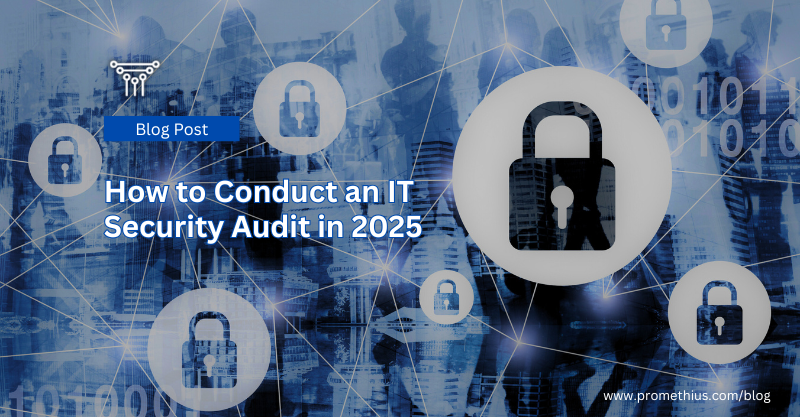- in Uncategorized by Tony Valle
How to Conduct an IT Security Audit in 2025

Ensuring the Safety of Your Organization's Digital Assets
Conducting an IT security audit is imperative for any organization, especially one with 100 to 200 employees. With the rapid evolution of technology, the number of cyber threats has increased, making it essential for organizations to regularly assess and strengthen their security measures. An IT security audit helps identify vulnerabilities, ensures compliance with regulations, and protects sensitive data. Here are ten comprehensive steps to effectively conduct an IT security audit:
More...
1. Define the Scope and Objectives
Before initiating an IT security audit, it is crucial to define the scope and objectives. Determine what aspects of your IT infrastructure need to be evaluated, such as networks, systems, applications, and data. Clearly outline the goals you aim to achieve, such as identifying vulnerabilities, assessing compliance with security policies, and ensuring data protection.
2. Assemble an Audit Team
Forming a competent audit team is vital for the success of the audit. The team should comprise individuals with expertise in various areas of IT security, including network security, application security, and data protection. Consider including both internal and external auditors to ensure an unbiased and thorough assessment.
3. Gather Documentation
Collecting relevant documentation is a critical step in the audit process. This includes network diagrams, system configurations, security policies, incident response plans, and user access controls. Having comprehensive documentation will provide the audit team with a clear understanding of your organization's IT infrastructure and security measures.
4. Conduct a Risk Assessment
Perform a risk assessment to identify potential threats and vulnerabilities that could impact your organization's IT environment. Evaluate the likelihood and potential impact of these risks. This step will help prioritize areas that require immediate attention and allocate resources effectively.
5. Evaluate Security Policies and Procedures
Review your organization's security policies and procedures to ensure they are up-to-date and aligned with industry best practices and regulatory requirements. Assess whether employees are aware of and adhere to these policies. Well-defined policies and procedures are the backbone of a robust security posture.

6. Perform Network and System Scanning
Utilize network and system scanning tools to identify vulnerabilities within your IT infrastructure. These tools can detect outdated software, misconfigurations, and other security weaknesses. Regular scanning helps maintain a proactive approach to identifying and mitigating potential threats.
7. Test Incident Response Plans
An effective incident response plan is crucial for minimizing the impact of security breaches. Test your organization's incident response plan by simulating various security incidents. Evaluate the response time, communication protocols, and effectiveness of the plan. Make necessary adjustments to improve preparedness.
8. Conduct Penetration Testing
Penetration testing involves simulating cyber-attacks to identify vulnerabilities that could be exploited by malicious actors. Engage ethical hackers to perform penetration tests on your network, applications, and systems. This hands-on approach provides valuable insights into potential security gaps.
9. Review Access Controls
Access controls play a vital role in protecting sensitive data and systems. Review user access levels to ensure that employees have the appropriate permissions based on their roles and responsibilities. Implement the principle of least privilege to minimize the risk of unauthorized access.
10. Report Findings and Implement Improvements
Document the findings of the IT security audit in a detailed report. Highlight the identified vulnerabilities, risks, and areas of non-compliance. Provide actionable recommendations for improvement. Work with relevant stakeholders to prioritize and implement these recommendations to enhance your organization's security posture.
Conducting an IT security audit is a continuous process that requires regular reviews and updates. It is essential to stay informed about emerging threats and evolving security practices. By following these ten steps, organizations with 100 to 200 employees can proactively safeguard their IT infrastructure, protect sensitive data, and ensure compliance with industry standards. Regular audits not only enhance security but also build trust with clients and stakeholders, demonstrating a commitment to maintaining a secure and resilient IT environment.
